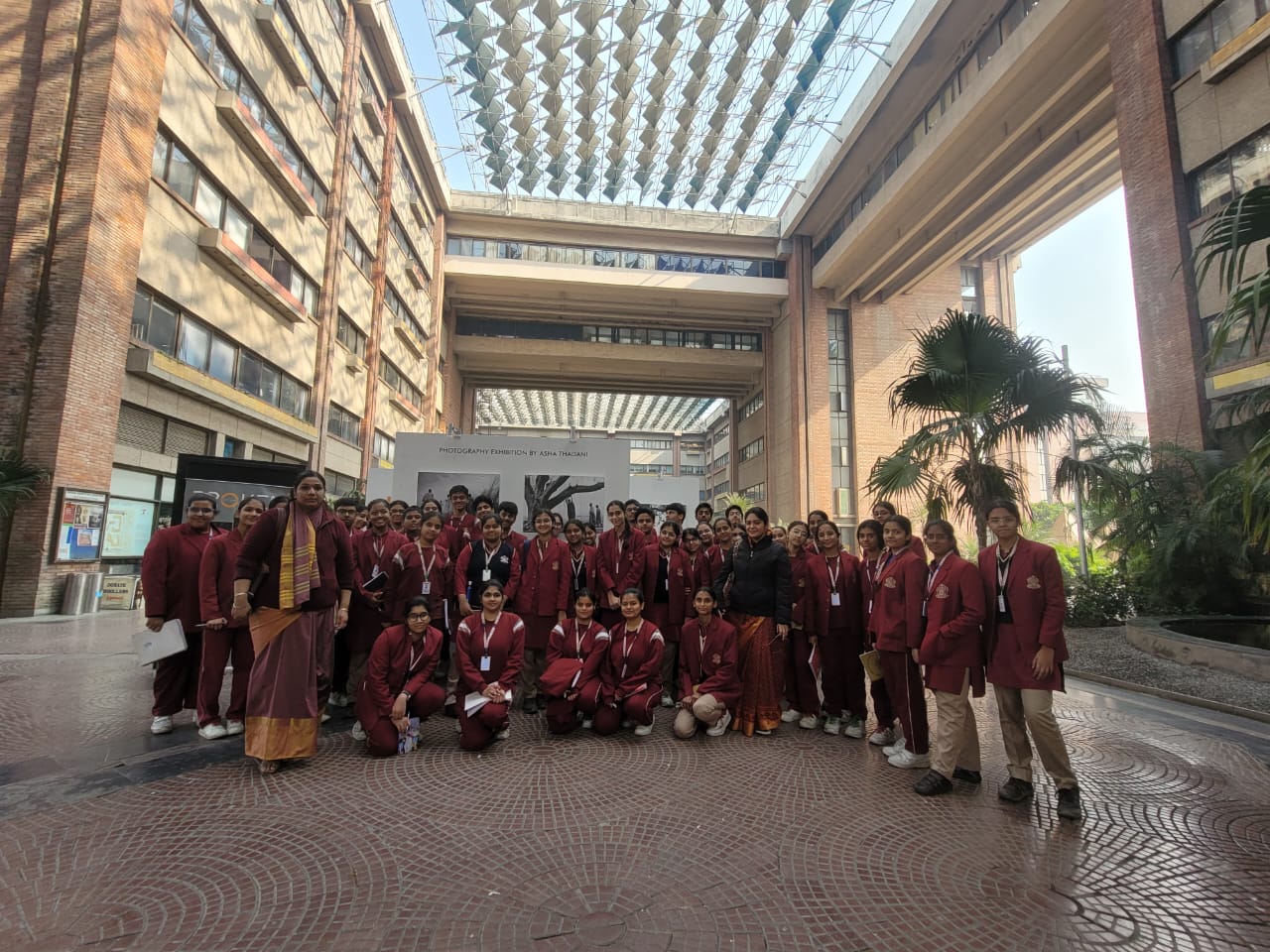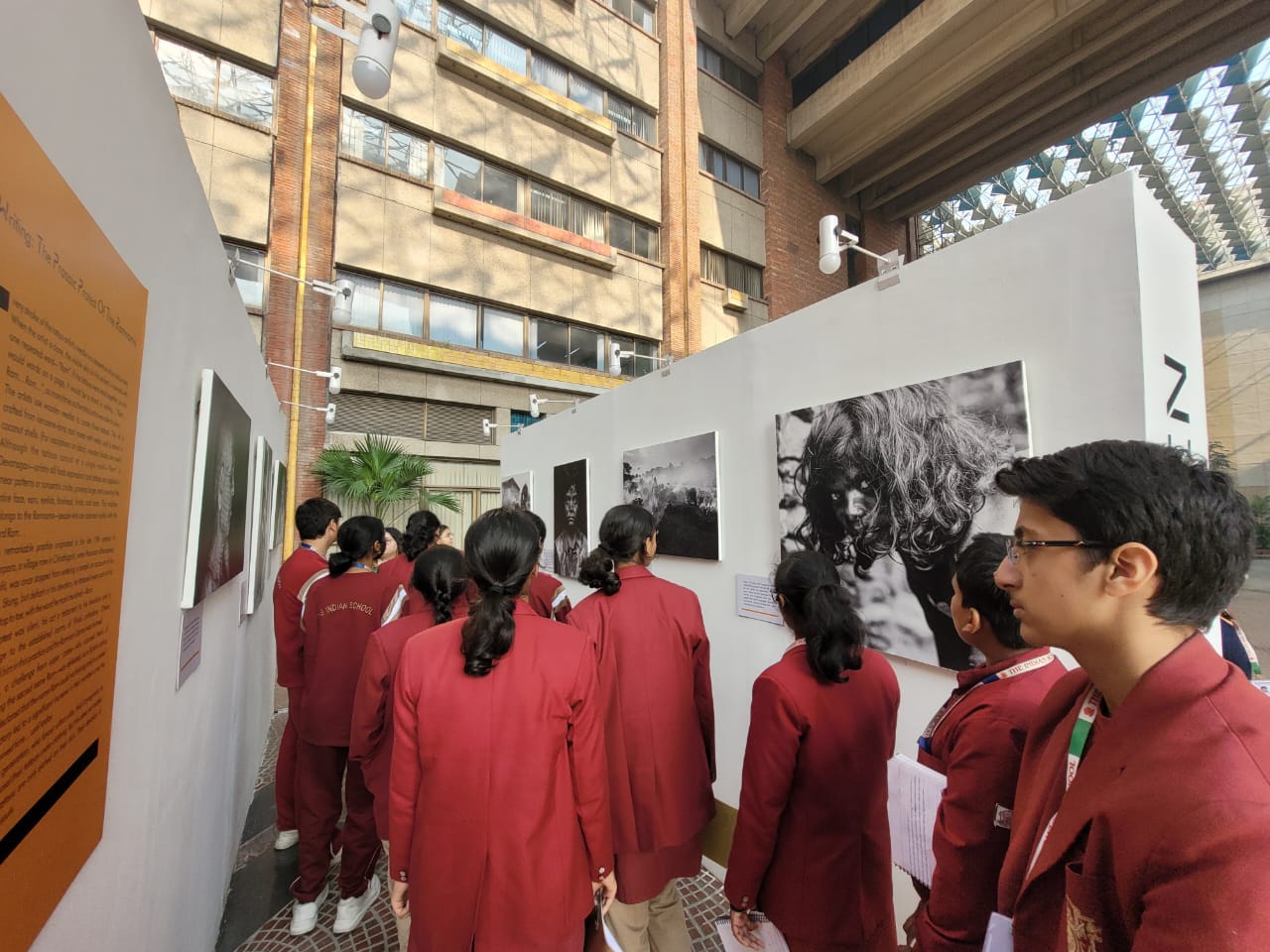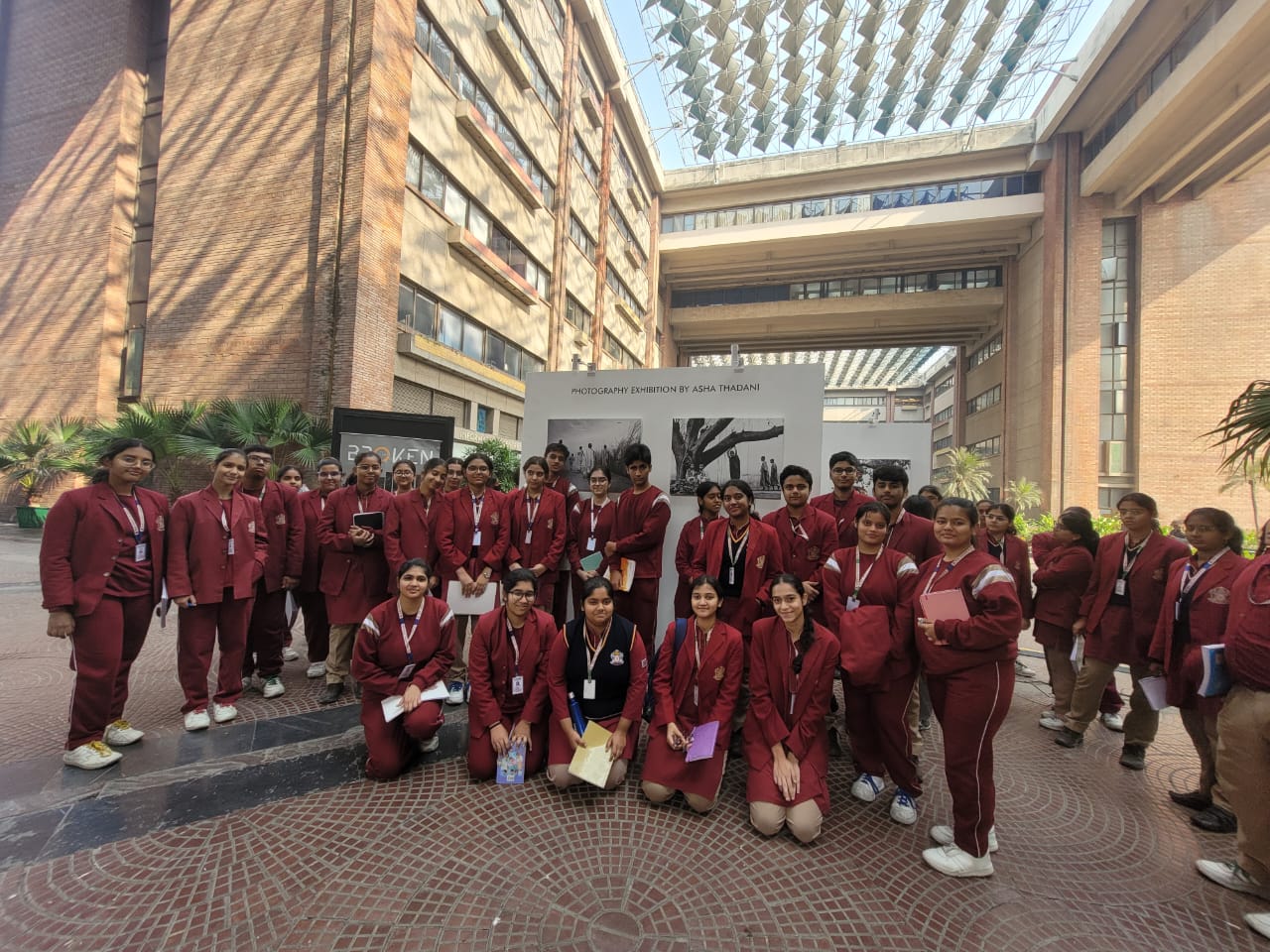Visit to a photo exhibition on Dalit communities across India
50 students from classes IX and XI, along with two accompanying teachers, visited an impactful photography exhibition titled “Broken.” Hosted at the India Habitat Centre, the exhibition was curated by noted Bangalore based photographer, Ms Asha Thadani. Ms Thadani’s body of work, spanning over two decades, vividly captures socio-cultural issues, remote cultures, antiquated traditions, and contemporary life.
Ms Selena Shroff guided the students through the exhibits, providing an insight into the lives of various Dalit communities.
The exhibition showcased approximately 70 photographs, each narrating poignant stories of the life of Dalits in different parts of India. Thadani’s self-taught, vivid, and energetic style, brought to light the struggles and prejudices still faced by Dalits, across the country.
Highlighted Photographs:
The Unseen Suffering in the Coal Mines of Jharia: Thadani’s lens captured the harsh reality of women in the Jharia coal mines, portraying the exploitation and resilience of individuals like “Devi.” The photograph unveiled the dire conditions and sexual exploitation faced by women in these mines.
The Protestant Tattoos of the Ramnamis: Thadani depicted the rebellion of the Ramnami Samaj in Chhattisgarh, through some striking “Ram Ram” tattoos, which challenged the inhuman caste system. The photograph vividly portrayed the community’s unique approach to worship and its impact on their identity.
The Boatmen and Fishermen of Banaras: This image delved into the life of Ashok Kumar, a diver from the Mallah community in Banaras, exposing the complex rituals at death and the challenges faced by those involved in water burials.
The Life of Joginis “God’s Wife”: Thadani’s lens moved to Telangana, exposing the dark rituals surrounding the Joginis, highlighting the disturbing practices which persist in these villages.
The Musahars from Bihar: Thadani avoided the stigmatisation of the Musahar community by focusing on capturing pleasant moments, offering a different perspective on their lives.
The Goat Head Processors: In South India, Thadani provided insights into the Holeyas’ profession of processing goat heads, shedding light on their way of life and the challenges they face.
The Theyyam Performers of Kerala: These photographs explored the significance of the role of the Theyyam artists in religious ceremonies, capturing the reverence they receive during performances.
Opaari Women: Thadani introduced the Opaari women of Tamil Nadu, paid to cry at funerals. The photographs captured the emotional depth of their performances and challenging stereotypes surrounding grief.
Dusadh Women from Bihar: Thadani showcased the protest tattoos of the Dusadh women, revealing their creative use of body art to challenge societal norms that restrict Dalits from adorning themselves.
Neo Buddhists in Sarnath: The final photographs portrayed Dalits in Sarnath who renounce their identities to become Neo Buddhists, capturing the emotional journey and a powerful sense of awakening.
Ms Asha Thadani’s exhibition served as a powerful narrative, shedding light on the challenges faced by Dalits in India. Through her lens, she showcased the strength, resilience, and unique stories of these communities, challenging stereotypes and fostering a deeper understanding of the complexities surrounding caste discrimination. Each visitor left with a profound appreciation for the challenges faced by Dalit communities and a newfound empathy for their stories.















